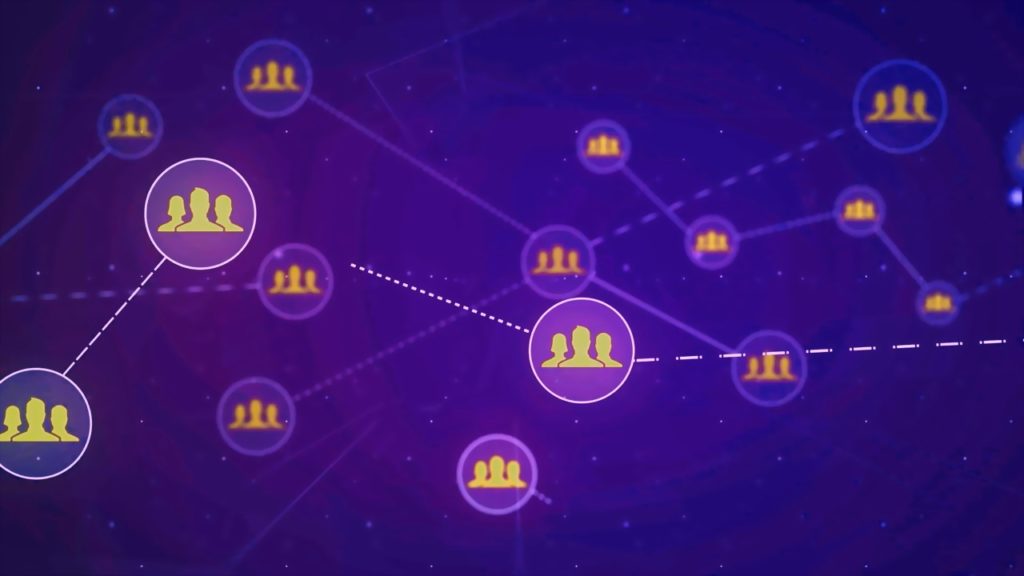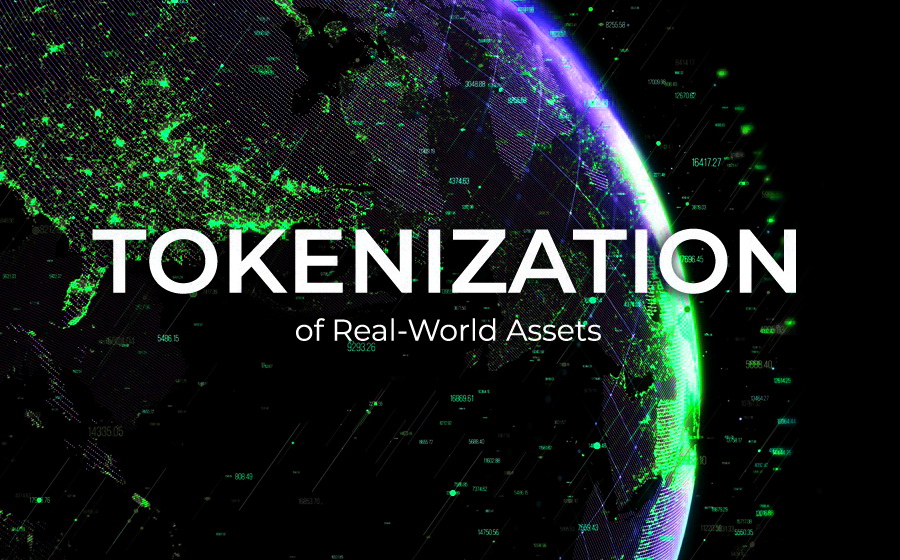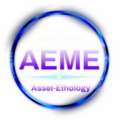
Decentralized Finance Revolutionizing the
Financial Landscape
I. Introduction
A. Explanation of DeFi and TradFi
B. The growing popularity of DeFi and its impact on traditional finance
II. Understanding DeFi and TradFi
A. Definition and core principles of DeFi
B. Overview of traditional finance and its centralization
C. Key differences between DeFi and TradFi
III. Advantages of Decentralized Finance (DeFi)
A. Financial Inclusion and Accessibility
B. Transparency and Security
C. Decentralization and Resilience
D. Lower Fees and Faster Transactions
IV. Challenges and Risks of DeFi
A. Smart Contract Vulnerabilities
B. Regulatory Uncertainty
C. Lack of Traditional Protections
V. Traditional Finance’s Strengths and Weaknesses
A. Established Institutions and Trust
B. Regulatory Framework and Consumer Protections
C. Centralization and Efficiency
D. Limited Accessibility and High Fees
VI. Use Cases of Blockchain Technology
A. Asset Management
B. Staking
C. Decentralized Lending and borrowing platforms
D. Automated Market Makers and Decentralized Exchanges
E. Margin Trading
F. Synthetic Asset Issuance and Real-World Assets
VII. DeFi Disrupting Traditional Finance
A. Market Opportunities and Threats
B. Integration and Collaboration Potential
C. The Role of Centralized Institutions in a Decentralized World
VIII. The Future of Finance: Hybrid Approach
A. The Emergence of Hybrid Financial Systems
B. Potential Scenarios for the Coexistence of DeFi and TradFi
C. The Role of Regulators in shaping the Future
IX. Conclusion
A. Recap of Key Points discussed
B. The ongoing Transformation of the Financial Industry
C. The Potential of Blockchain Technology to Revolutionize Finance
X. Acknowledgment
I. Introduction
A. Explanation of DeFi and TradFi
In the labyrinthine world of finance, two titans have emerged to duel for
supremacy: Decentralized Finance (DeFi) and its long-standing adversary,
Traditional Finance (TradFi). Picture DeFi as the daring renegade, wielding the
power of blockchain technology to revolutionize the financial landscape and
grant financial autonomy to the masses.
DeFi, in essence, is a paradigm-shifting approach to financial services
that operates on decentralized networks, based on blockchain technology. It
eliminates the need for intermediaries, such as banks and financial
institutions, by utilizing smart contracts to automate transactions and
lending/borrowing processes. This revolutionary system has the potential to
democratize access to financial services, breaking barriers of entry and
fostering financial inclusion on a global scale.
On the other side is TradFi, the seasoned veteran, with its established
institutions and regulatory frameworks striving to maintain order amidst the
winds of change. For decades, traditional finance has been the dominant force,
relying on centralized authorities to regulate, validate and facilitate
financial transactions. Its longstanding presence has instilled a sense of
familiarity and trust among consumers, which has been one of its major strengths.
B. The growing Popularity of DeFi and its Impact on Traditional Finance
As DeFi gains momentum, it’s hard not to notice the rumbling beneath the
once placid waters of traditional finance. The allure of DeFi’s transparency,
security and immutability has sparked curiosity and intrigue, causing the
financial world to question the status quo. With the increasing adoption of
blockchain technology, DeFi platforms are flourishing, offering a wide range of
services, including decentralized lending, yield farming, and decentralized
exchanges, to name a few.
One of the most significant impacts of DeFi is the potential disruption
it poses to the traditional financial system. The decentralized nature of DeFi
networks removes the need for intermediaries, reducing transaction fees and
processing times while empowering individuals to take control of their assets.
This has caught the attention of both retail users seeking greater financial
freedom and institutional investors exploring new avenues for investment.
Despite the promising prospects of DeFi, traditional finance is not going
down without a fight. As DeFi protocols continue to evolve, regulators and many
traditional financial institutions are stepping up their efforts to understand
and adapt to this emerging financial ecosystem. Some traditional players are
even exploring ways to incorporate blockchain technology and DeFi principles
into their existing frameworks, aiming for a hybrid approach that amalgamates
the best of both worlds.
In the upcoming rounds of this financial clash, we’ll dive deeper into
the advantages and challenges presented by DeFi and TradFi.
II. Understanding DeFi and TradFi
A. Definition and core principles of DeFi
In the realm of financial innovation, DeFi emerges as a rebellious disruptor,
defying the traditional norms of centralization and intermediation. At its
core, DeFi encompasses a radical concept — empowering individuals with
financial sovereignty through decentralized networks. It envisions a future
where financial services are transparent, accessible, and controlled by the
very users they serve, cutting ties with the outdated notions of relying on
trusted third parties. This new-age financial ecosystem is governed by code,
not by faceless corrupt institutions, challenging the status quo with
unwavering tenacity.
B. Overview of Traditional Finance and its Centralization
Traditional finance, the grand old patriarch of the financial realm,
adorned with its bureaucratic tapestry and fortress-like institutions. For
centuries, it has reigned with an iron grip, orchestrating financial
transactions through a carefully curated network of banks, regulators, and
intermediaries. Centralization has been its hallmark, granting power and
control to the few, leaving the masses yearning for a taste of true financial
autonomy. But as DeFi unfurls its banner of disruption, traditional finance
finds itself at a crossroads. The age-old model of intermediation is being
challenged and the call for decentralized alternatives is resonating louder
than ever before.
C. Key Differences between DeFi and TradFi
In this clash of financial philosophies, the divergence becomes apparent.
DeFi’s utilization of decentralized blockchain technology fosters a borderless
and permissionless ecosystem, granting access to financial services to anyone
with an internet connection. On the other hand, TradFi’s centralized
architecture operates within established regulatory frameworks, ensuring some a
kind of consumer protection (which rarely works), but often limits access for underserved
populations.
In this thrilling clash of DeFi and TradFi, the stage is set for a
revolution that transcends the boundaries of finance. This is the revolution of
decentralized finance, and it’s time to break free from the ordinary and
embrace the extraordinary!
III. Advantages of Decentralized Finance (DeFi)
A. Financial Inclusion and Accessibility
In the vibrant realm of DeFi, the doors to financial opportunity swing
wide open, inviting even the most marginalized individuals to partake in the
feast of prosperity. DeFi’s permissionless nature breaks down the barriers that
once restricted access to traditional financial systems. No longer confined by geographical
boundaries or bureaucratic hurdles, anyone with an internet connection can
unleash their financial potential – DeFi is banking the unbanked.
B. Transparency and Security
Peering behind the cryptographic curtains of DeFi, you’ll discover a
realm of radical transparency and unyielding security. Powered by the marvels
of permissionless blockchain technology, transactions are etched in immutable
ledgers, leaving no room for manipulation or hidden agendas. The watchful eyes
of the blockchain community and validators act as vigilant guardians, ensuring
that foul play is swiftly thwarted. In this decentralized fortress of financial
fortitude, trust becomes intrinsic, and the era of secrecy and doubt is
rendered obsolete.
C. Decentralization and Resilience
The allure of decentralization, where power is scattered like stardust
across a cosmic canvas, and no single entity holds the reins. In DeFi’s,
there’s no central point of control, making it akin to a resilient Hydra – cut
off one head, and countless others emerge, undeterred. The absence of a single
point of failure grants DeFi the ability to weather storms that would leave
traditional financial structures trembling.

D. Lower Fees and Faster Transactions
In the halls of DeFi, economic efficiency reigns supreme, and exorbitant
fees retreat into the shadows. The peer-to-peer nature of blockchain
transactions eliminates the need for intermediaries, slashing costs and
empowering users with fair financial playing field.
Say goodbye to antiquated delays – DeFi’s rapid-fire transactions are like
lightning in a bottle, speeding 24/7 across the digital ether with unparalleled
swiftness. Traditional finance’s sluggish pace is no match for the fleet-footed
elegance of DeFi’s blockchain ballet.
IV. Challenges and Risks of DeFi
A. Smart Contract Vulnerabilities
In the world of DeFi, where code is king, the magnifying glass of
scrutiny hovers over smart contracts, seeking potential chinks in their digital
armor. As we marvel at the ingenuity of these self-executing marvels, we must
acknowledge that even the most brilliant creations are not immune to bugs and
vulnerabilities. A single line of faulty code can open a Pandora’s box of
havoc, leading to catastrophic consequences for unsuspecting users. In this
techno-jungle, caution and comprehensive auditing are the swords we wield to
safeguard against the lurking shadows of exploitation.

B. Regulatory Uncertainty
Ah, the ever-evolving dance between DeFi and regulators, a tango of
uncertainty and anticipation. As the decentralized revolution gains momentum,
the halls of traditional finance are brimming with questions, pondering how to
tame this untamed beast. The regulatory landscape remains a labyrinth, with
each jurisdiction singing a different tune. Enter the EU’s harmonizing melody –
the Markets in Crypto-Assets Regulation (MiCA) – seeking to harmonize the
cacophony of crypto regulations across member states. But even amidst this
endeavor, uncertainty lingers even with complicated MiCA regulation.
C. Lack of Traditional Protections
In the bosom of DeFi, where self-custody reigns supreme, users are both
kings and sentinels, guarding their digital treasures. Yet, amidst this
empowering freedom, the absence of traditional protections is an undeniable
reality. Unlike the safety nets offered by traditional financial institutions,
where recourse is often at arm’s reach, DeFi voyagers navigate uncharted
waters, aware that a misplaced key or a malicious actor could spell the end of
their financial journey. In this brave new world, securing one’s assets is not
merely an afterthought but a battle cry for personal responsibility.
As we waltz through the enchanting maze of DeFi’s challenges, we’re
reminded that every revolutionary journey comes with its share of risks. Smart
contract audits, regulatory clarity, and enhanced user protections beckon us on
this quest for a more secure and resilient financial frontier.
V. Traditional Finance’s Strengths and Weaknesses
A. Established Institutions and Trust
In traditional finance, established institutions have withstood the test
of time, exuding an aura of trust which might be exploited by them in future.
But as we explore DeFi’s disruptive potential, we question whether trust should
be vested in big centralized institutions / banking cartels or in incorruptible
code, a self-evident system of immutability which runs distributed on millions
of computers on a planetary-scale.
B. Regulatory Framework and Consumer Protections
Regulatory frameworks aim to protect consumers, yet the current banking
crisis in the US and asset freezes faced by ‘Freedom Convoy’ supporters in
Canada reveal the limitations of such protections. We’re prompted to seek
alternative permissionless models that transcend traditional boundaries.
C. Centralization and Efficiency
Centralization has enabled more or less efficient financial coordination,
but the rise of DeFi challenges the notion that central authority is the only
path to efficiency.
Blockchain’s distributed networks reveal novel efficiencies and security that
redefine the status quo of centralized systems due to its immutability and
tamper-evident security.
D. Limited Accessibility and High Fees
Traditional finance’s limited accessibility and high fees create barriers
for many, while DeFi’s democratizing forces offer hope for financial inclusion.
There are no borders for DeFi, while there are very high fees and long
processing times associated with cross-border transactions in TradFi.
VI. Use Cases of Blockchain Technology
A. Asset Management
In DeFi users get the authority to experience full control over their assets.
Since the users now have the power of managing their virtual assets, they can
even earn from those assets. Unlike the traditional system where the users have
to share their account credentials with the broker and third parties (also
sensitive data like driver´s license, passports etc. due to KYC requirements), DeFi
users do not need to share any of this sensitive data in order to participate
in a true decentralized permissionless system. The concept of (permissionless) DeFi
simply removes the involvement of intermediaries which means that the user has
more power than ever (full control).
B. Staking
Pledging your crypto-assets as collateral for blockchain networks that
use the PoS (Proof of Stake) consensus algorithm. Similar to how miners
facilitate the achievement of consensus in PoW (Proof of Work) blockchains,
stakers are chosen to validate transactions on PoS blockchains and make sure
that the network stays secure. As incentive stakers receive staking rewards.
C. Decentralized Lending and Borrowing Platforms
In this crypto cosmic playground, lending and borrowing transcend
traditional banks.
Peer-to-peer platforms enable global borrowing without the need of any intermediaries.
Lenders stake assets, are earning high returns, while challenging age-old
narratives.
D. Automated Market Makers and Decentralized Exchanges
Gather ’round the interstellar bazaar, where automated market makers
(AMMs) and decentralized exchanges (DEXs) redefine trading dynamics. AMMs
calculate token prices without order books. DEXs welcome freedom seekers,
trading assets directly from digital wallets.
E. Margin Trading
In the case of traditional finances, margin traders utilize their trades
while they borrow funds from a broker further creating collateral for a loan.
However, when it comes to DeFi, it is backed by non-custodial and decentralized
lending protocols, and the power of smart contracts has automated traditional
brokerage activities and become one of the potential DeFi use cases.
F. Synthetic Asset Issuance and Real-World Assets
Tokenization leverages blockchain technology to represent real-world
assets (RWAs) or off-chain assets (OCAs), such as fine art, real estate, stocks
and more, as digital tokens or as a so-called digital twin of it on the
blockchain. It is essential to recognize that many assets considered
‘real-world’ are intangible assets that don’t exist physically, yet they have monetary
value. Tokenization can be done in one of two ways – either through the
creation of a synthetic version of the asset, or through the ownership and
tokenization of an underlying asset. A synthetic asset is essentially tokenized
derivative that mimics the value of another asset. RWAs and synths will be
pivotal to the growth of DeFi, and Web3 as a whole.

Decentralized finance technology is a broader term that is not confined
to these use cases, but has countless areas where its potential can be
implemented.
VII. DeFi Disrupting Traditional Finance
A. Market Opportunities and Threats
DeFi offers many market opportunities and threats to traditional finance.
As DeFi’s decentralized galaxy expands, traditional institutions face enormous
challenges of adapting or risk becoming stardust in the financial revolution.
B. Integration and Collaboration Potential
Amidst the clash of titans, a cosmic harmony emerges, hinting at
integration and collaboration potential between DeFi and TradFi. Traditional
finance may embrace DeFi’s allure, seeking ways to harmonize strengths from
both worlds for a hybrid financial future.
C. The Role of Centralized Institutions in a Decentralized World
In this cosmic odyssey, centralized institutions ponder their place in a decentralized
world. The gravity of change challenges their essence. Will they cling to
familiar shores or embrace the boundless potential of decentralization? As DeFi
disrupts finance, market opportunities and threats arise. Integration and
collaboration promise a hybrid future, while centralized institutions face a
cosmic conundrum.
VIII. The Future of Finance: Hybrid Approach
A. The Emergence of Hybrid Financial Systems
In this dynamic evolution, a hybrid approach emerges, blending DeFi and
TradFi’s finest traits. Decentralized innovation intertwines with established
financial foundations, forging a path to harmonious coexistence. The future of
finance embraces duality, fostering an ecosystem with unlimited possibilities.
B. Potential Scenarios for the Coexistence of DeFi and TradFi
Decentralized applications (dApps) serve as gateways bridging users
between DeFi and traditional services. Institutional powerhouses and DeFi
disruptors form partnerships, creating hybrid platforms that push financial
boundaries.
C. The Role of Regulators in Shaping the Future
Regulators contemplate their cosmic role in this narrative. Will they
quell innovation or recognize DeFi’s potential, creating a supportive
environment? The financial voyage watches, eager to see how the stars align. In
this journey of finance’s future, a hybrid approach takes center stage. The
blend of DeFi and TradFi sparks boundless possibilities in a regulative supportive
environment. However, most countries do not create supportive regulatory environments
which they show with their new, even more complicated and sometimes unclear
regulatory frameworks which will lead to excessive compliance costs for
businesses and hinder innovation.
IX. Conclusion
A. Recap of Key Points discussed
Let’s recap the key points that have illuminated our financial odyssey.
Decentralized Finance (DeFi) and Traditional Finance (TradFi) have emerged as
formidable adversaries, each with its strengths and weaknesses. DeFi’s
transparency, inclusivity, and disruptive potential challenge the centralized power
of TradFi. Yet, we’ve discovered the emergence of a hybrid approach, where DeFi
and TradFi coexist, paving the way for a transformative future.
B. The ongoing Transformation of the Financial Industry
The cosmic symphony of disruption plays on, orchestrating an ongoing
transformation of the financial industry. As DeFi continues its meteoric rise,
traditional finance finds itself at a crossroads, contemplating adaptation and
collaboration.
C. The Potential of Blockchain Technology to Revolutionize Finance
Blockchain’s potential reaches far. Tokenization, decentralized
governance, and more await exploration. DeFi’s potential influence extends
beyond banking, with the opportunity to disrupt lending, insurance, asset
management, and other industries. Interoperability between different
blockchains and more user-friendly interfaces will propel DeFi adoption even
further.
In conclusion, DeFi symbolizes a financial paradigm shift, providing
decentralized, transparent, and inclusive alternatives to established financial
institutions, unlocking the keys to financial freedom. With blockchain as our
compass, we pioneer a future of boundless potential. So, intrepid voyagers,
venture forth, and let the symphony of finance resound with infinite
possibilities.
X. Acknowledgment
Thanks to the DeFi Talents program, an 18-week mentoring initiative
designed to empower individuals for leadership roles in the decentralized finance
arena. More information about this program can be found here:
https://web3-talents.io/defi-talents
Thanks for reading. Hope you enjoyed it.
You can also find us on Linkedin.
You can also find this article on Medium:
→ Decentralized Finance Revolutionizing The Financial Landscape on Medium
Disclaimer:
This content is for educational purposes only and should not be considered
financial or other advice. Always do your due diligence before investing.
